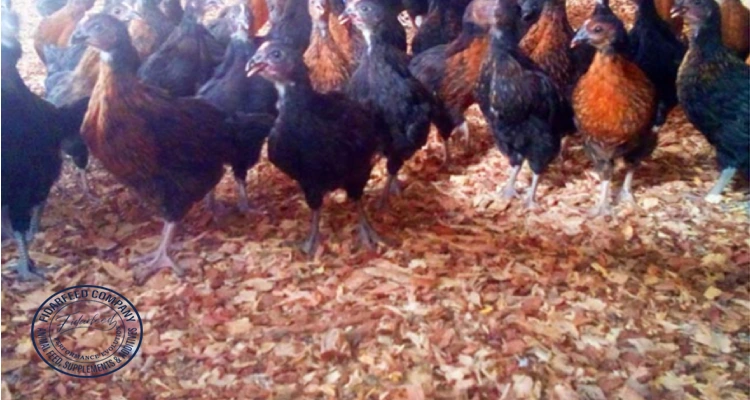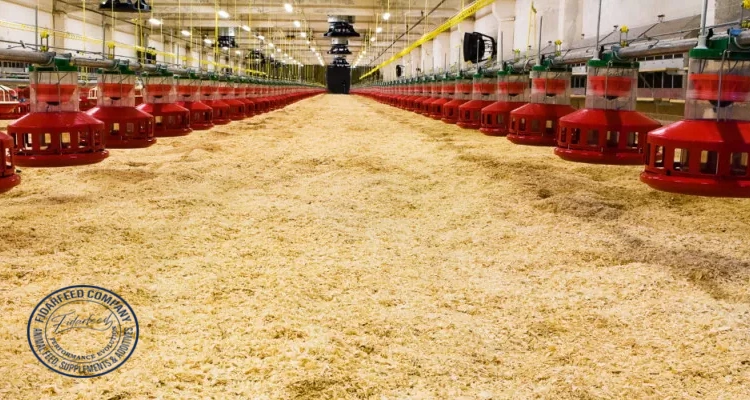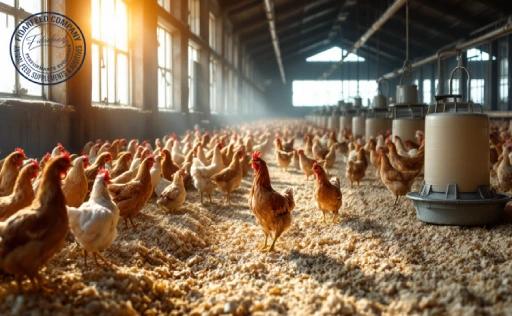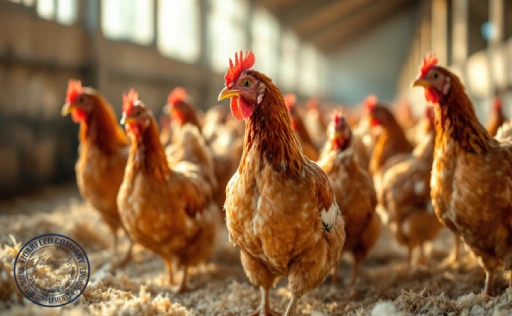
What is the Best Way to Manage Poultry Litter on My Farm?
If you’re wondering, “What is the best way to manage poultry litter on my farm?”, you’re not alone. Proper litter management is one of the most overlooked yet critical aspects of poultry farming. Whether you’re raising 200 broilers in your backyard or operating a large commercial unit, how you manage your litter directly impacts bird health, feed efficiency, and overall farm success. In this guide, we’ll walk you through practical strategies, backed by experience and science, that can help you maintain a healthier and more productive poultry environment. Let’s dive in.
Why Managing Poultry Litter on Your Farm Is So Important
Poor litter management doesn’t just smell bad — it can ruin your entire flock. High ammonia levels, wet bedding, and bacterial growth can lead to respiratory issues, footpad dermatitis, lower feed conversion, and even increased mortality rates.
Learn more about: Probiotic Supplement for Poultry
On the flip side, well-managed litter keeps birds comfortable, reduces stress, supports immunity, and boosts productivity. It’s not just about cleanliness — it’s about economics and ethics. Healthy birds grow faster, eat more efficiently, and require fewer medications. That means higher profits and better animal welfare.

Poultry Litter Explained: What It Is and Why It Matters for Farm Management
Poultry litter is the bedding material combined with manure, feathers, spilled feed, and water from the birds. Common bedding materials include wood shavings, rice hulls, straw, or chopped wheat.
Learn more about: Understanding Chicken Feed Stages: A Complete Guide for Poultry Farmers
Over time, this material absorbs moisture and waste, making it a potential breeding ground for harmful microbes if not managed properly. Understanding what’s in your litter is the first step to managing it wisely.
What Is the Best Way to Manage Poultry Litter on My Farm? Expert Practices That Work
So, what is the best way to manage poultry litter on my farm? The answer depends on your setup, climate, and flock size — but the core principles remain the same: keep it dry, clean, and aerated. Good litter management starts on day one and continues every single day.
Daily Litter Checks and Routine Cleaning
Every morning, take a quick walk through your poultry house. Look for wet patches, caked areas, or signs of ammonia (if your eyes or nose sting, it’s already too high). Remove and replace damp litter immediately. Scrape off built-up droppings under feeders and drinkers. Stir the litter regularly to promote air circulation and prevent compaction. These simple daily habits reduce disease risks and improve bird comfort.

Choosing the Right Bedding Material
Not all bedding is created equal. Softwood shavings are widely preferred due to their high absorbency and low dust. Rice hulls are economical and locally available in some areas, though they absorb less moisture. Avoid materials like newspaper or fine sawdust, which can mat and create poor airflow. The ideal bedding should be dry, free of mold, and easy for birds to scratch and move. A good bedding base can make or break your litter management efforts.
Learn more about: Optimizing Poultry Diets: Processed Meat Meal in Animal Feed for Enhanced Protein
Managing Moisture and Ammonia Levels
Moisture is your biggest enemy. High humidity creates the perfect conditions for ammonia and harmful bacteria. Ensure proper ventilation in your poultry house — not just for fresh air but to keep bedding dry. Use nipple drinkers instead of open trays to reduce spillage. Maintain indoor humidity below 60%. If ammonia becomes a problem, consider natural additives like zeolite or acidifiers to neutralize it. Your nose is your best sensor: if it smells sharp, it’s time to act.

Smart Tools and Technologies for Easier Litter Management
Technology is your friend, especially when managing larger operations. Litter aerators or mechanical rakes help fluff and turn litter with minimal labor. Infrared thermometers can detect cold, wet spots early.
Learn more about: The Ultimate Poultry Breeder Management Guide: Boost Your Flock’s Productivity
Moisture meters give you data-driven insights. Even simple upgrades like automated drinkers and feed bins reduce waste and contamination. While tools don’t replace human oversight, they can make your job a lot easier — and more accurate.
How to Reuse or Dispose of Poultry Litter Safely
Used poultry litter can be a valuable resource if handled correctly. Many farmers compost litter to create organic fertilizer. Composting reduces pathogens and converts nitrogen into a stable form that plants can use. Others apply it directly to fields, but only with proper drying, testing, and following local guidelines to avoid contamination.
Learn more about: Boost Your Poultry’s Growth with Sustainable, High-Quality Processed Meat Meal
Never dispose of litter near water sources or leave it exposed to rain — this risks pollution and disease spread. Follow biosecurity protocols when transporting or selling litter to avoid cross-contamination between farms.

Common Mistakes Farmers Make (And How to Avoid Them)
Even experienced farmers slip up. One common mistake is underestimating how quickly moisture builds up — especially in colder months when ventilation is reduced. Another is choosing the wrong bedding, either too fine (leading to compaction) or too coarse (reducing absorption).
Learn more about: The Benefits of Probiotics in Poultry: A Must-Know Guide
Skipping daily checks, delaying wet patch removal, or ignoring signs of ammonia buildup can quickly spiral into disease outbreaks. Remember: prevention costs less than treatment — in both money and stress.
Final Thoughts: Build a Healthier, Cleaner Poultry Environment
Managing poultry litter isn’t glamorous — but it’s a cornerstone of successful poultry farming. With daily attention, smart choices, and a bit of investment in tools or better bedding, you can turn a potential problem into a competitive advantage. Healthy litter means healthy birds, and healthy birds mean higher yields, better feed efficiency, and less disease.
If you found this guide helpful or have your own tips to share, we’d love to hear from you! Drop a comment below, ask your questions, or share your thoughts with fellow breeders. Let’s build cleaner, safer poultry environments — one farm at a time.



